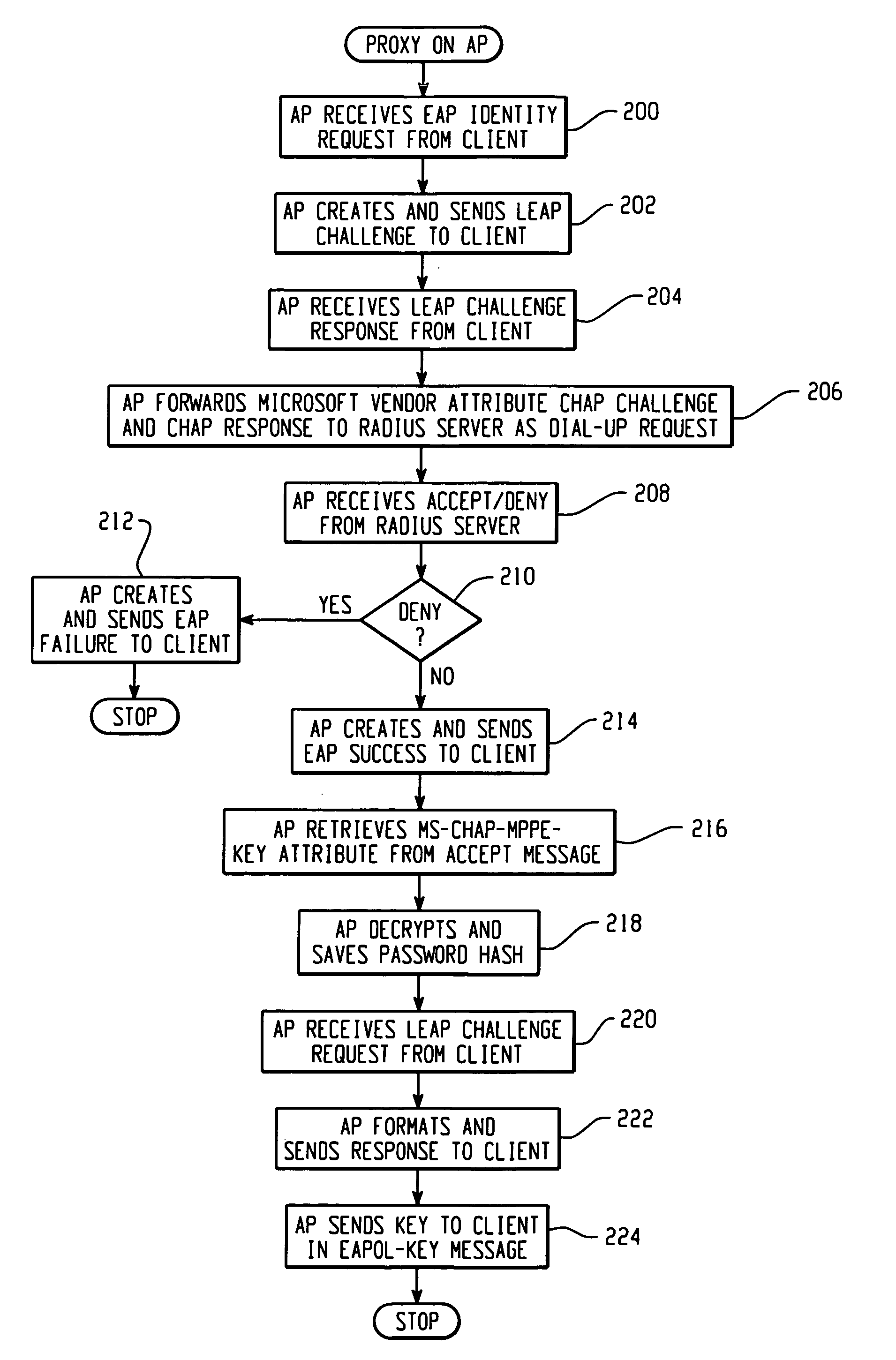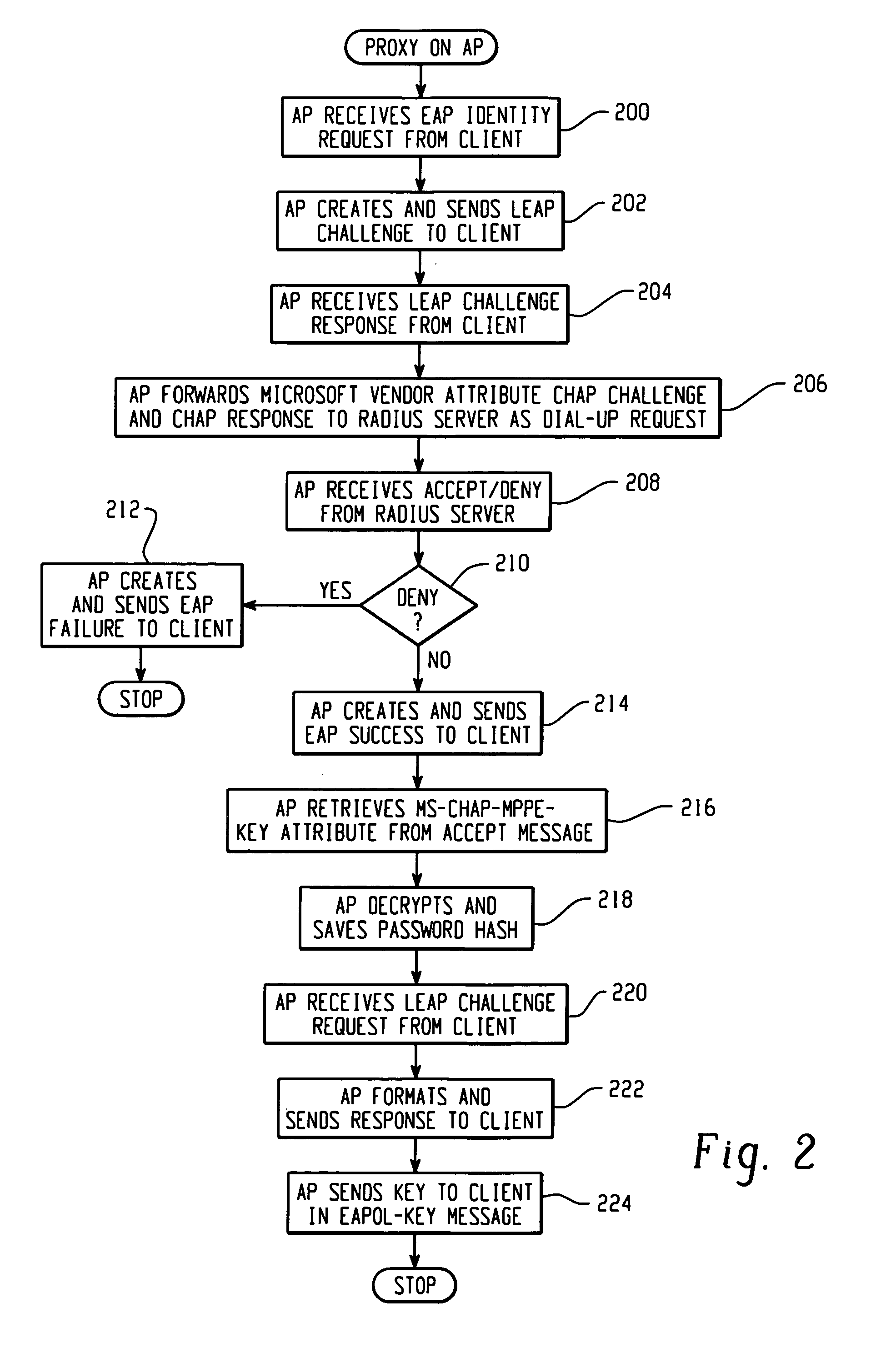System and method of controlling access by a wireless client to a network that utilizes a challenge/handshake authentication protocol
a wireless client and authentication protocol technology, applied in the field of wireless network connectivity, can solve the problems of security, cost prohibitive decisions for updating to the latest security access equipment, and cost issues that become even more problemati
- Summary
- Abstract
- Description
- Claims
- Application Information
AI Technical Summary
Benefits of technology
Problems solved by technology
Method used
Image
Examples
Embodiment Construction
[0020]The disclosed LEAP (Light Extensible Authentication Protocol) proxy architecture allows an existing legacy AAA system running EAP to utilize LEAP. The wireless client can continue to utilize LEAP, but communicates to a RADIUS server that supports MS-CHAP. The LEAP proxy allows MS-CHAP to be used for EAP authentication and encryption key distribution. The proxy service can be run on an AP or a RADIUS server that supports LEAP.
[0021]Proxy enables the access server (AS) to automatically forward an authentication request from a network access server (NAS) to another AS. After the request has been successfully authenticated, the authorization privileges that have been configured for the user on the remote AS are passed back to the original AS, where the user profile information is applied for that session on the NAS. This proxy tool that can expand the use of the AS by minimizing the number of users that need to be configured in a locally defined database. Group information, for ex...
PUM
 Login to View More
Login to View More Abstract
Description
Claims
Application Information
 Login to View More
Login to View More - R&D
- Intellectual Property
- Life Sciences
- Materials
- Tech Scout
- Unparalleled Data Quality
- Higher Quality Content
- 60% Fewer Hallucinations
Browse by: Latest US Patents, China's latest patents, Technical Efficacy Thesaurus, Application Domain, Technology Topic, Popular Technical Reports.
© 2025 PatSnap. All rights reserved.Legal|Privacy policy|Modern Slavery Act Transparency Statement|Sitemap|About US| Contact US: help@patsnap.com



